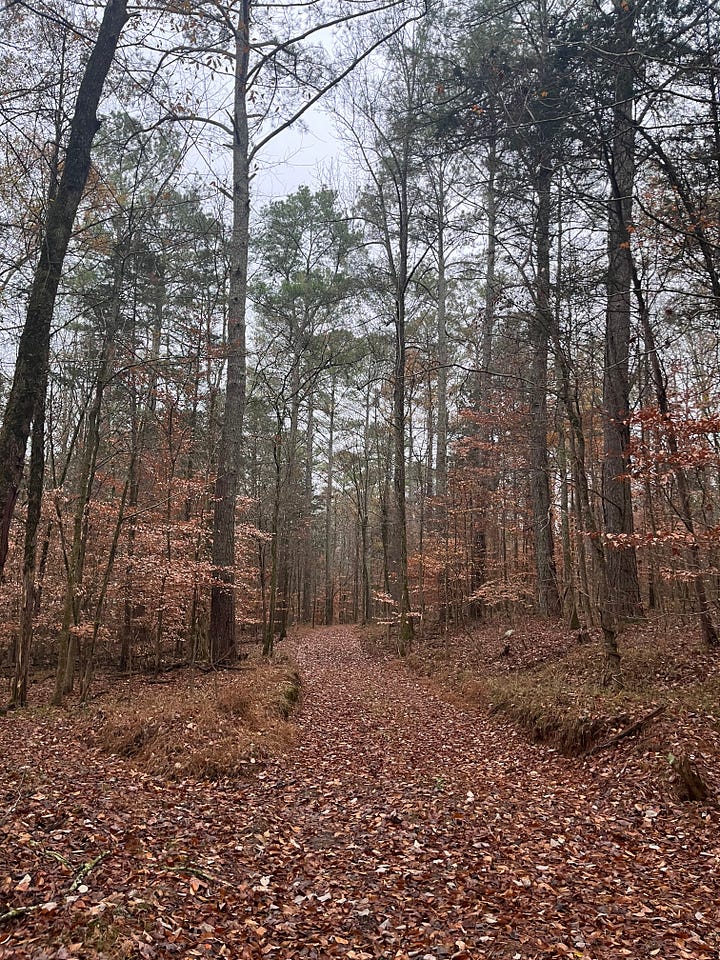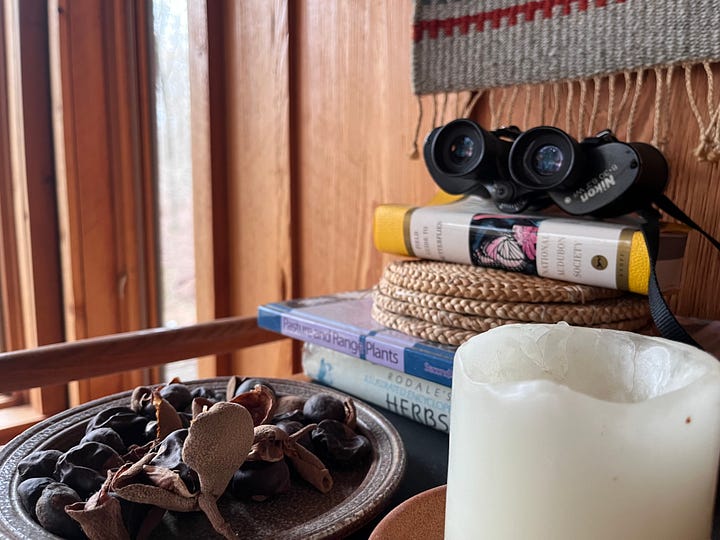I’m glad I live in a temperate climate. I like the seasonal changes. The more I pay attention to those changes, the more I notice, and the more I appreciate them.
I recently visited an elderly man in Kentucky. With amazement in his eyes, he shared with me how the Japanese maple in his front yard dropped half of its leaves between dawn and noon one day prior to my visit. Without the slightest breeze the leaves had rained down. And then “they abruptly stopped”. Think about that for a minute. For him to notice this, he must have been intentionally attentive. He had to watch and wait for this event, and indeed he was. He recorded the event in a weathered spiraled pad where it will be revisited next year around this time when he is anticipating the same event.
This annual leaf shedding is of no significance to anyone outside of the man who notices them. But to him, the event is amazing. Why? Because he was anticipating it, looking for it, knowing its arrival was coming, but not knowing when. Then, shrouded in mystery, it happened. Just as mysteriously as it happened the year prior. And the year prior.
These events are happening all around me. Even in the cold, gray days of winter, the world is moving, growing, birthing, chirping, building, dropping, dying, sleeping.
I was inspired by my noticing friend and have started a daily tradition of a familiar walk. I take the same path each day and try to notice my surroundings. I plan on sharing more on this in monthly letters with the hope of inspiring others.







What we are doing in January
Before spring time hits, I’m going to help my father-in-law clean out a pole barn. January is the perfect time for that. Life is a bit slower now. (ha!)
The orchard needs pruning, training, and mulching and now is the time because the trees are dormant. Pruning a fruit tree can be as complicated as you want to make it. I prefer not complicated. I want open canopies with strong branching angles. I prefer branches that are accessible for harvesting. The Holistic Orchard by Michael Phillips is my go-to book for all things orchards. In it he gives some good tips on pruning. The training part is something I have never done. I will use string to pull down branches that are not cooperating. Picture a branch that is growing heavenward, and I want it to grow more horizonward (?). I will take a string, run it through piece of water hose, to avoid cutting into the branch, and stake it down after pulling the branch down. This will help me get the low hanging branches I want for easy harvesting. Some people use string with bricks tied to the end as weights instead of staking. This is my first time trying this so I may trial both ways. Now (winter) is also the time to mulch the trees before the spring flush of annual flowers, forbs, and grasses.
I’d love to harvest a deer this winter. The only problem is, I want to hang it and process it myself. That is a … process. I’m not sure I’m ready to commit to it yet. I’m not sure I am willing to make time for it.
A process I am willing to commit to is getting ready for a control burn that will happen in February. I must put in fire breaks and clear around trees I want to protect. I’m excited about this control burn and what it might mean for the little patch of woods I’m managing. My familiar walk is beside and through this area. I imagine I will be spending a lot of time identifying wildflowers that pop up after years of leaf litter accumulation has burned away. Stay tuned!
I’ll be cutting and stacking firewood for next year. Tis the season.
Lastly, I need to terrace our side yard so that we can have a garden. I’m excited about this process and the potential end result. I will terrace it with rocks from the creek and cedar logs from the future barn site. I need the ground to be dry for this and that is rare for this time of the year. This project will likely last into the summer. However, there is an area I am prioritizing that I want to complete before April when summer planting begins. I think that is doable.
The bad news is January is half gone. The good news is these chores can bleed over into February and all will be well.
🥦 In the Garden
Vegetables
Seed Indoors - Broccoli, Kale, Cabbage, Head Lettuce, Celery, Kohlrabi
Look for the “Seeding Deep Dive” coming out in a few weeks. In that version of the newsletter, I will talk all about seeding indoors and how we do it.
If using older seed, you can test germination by placing seed in a damp paper towel and then placing in a Ziplock bag. Place in a dark room and check daily for sprouting. Most seeds will easily germinate in a week’s time.
Flowers
Start seeds inside of perennial flowers by the end of January
Annual flowers with long germination periods like snapdragons and begonias can also be started inside
👇Previous post from the archive
🌿 How We Grow Our Transplants From Seed At Home
Before we jump in, I’d like to make sure we are on the same page with some terms.
Mow down any fall planted cover crops in late January. Leave residue on soil surface and add lots of mulch on top. When it’s time to plant in February, pull back mulch and plant directly into soil.
Get your garden beds prepared if they are not already settled and covered. If your garden has leftover weeds and is a mess from the fall and winter, do your best to remove all plant residue including the seeds of the remaining plants. Once removed, mulch heavily in preparation for spring planting.
Getting seed starting equipment ready for the upcoming seeding season: Prepare for the excitement of seed starting by organizing and cleaning your seed starting equipment. Check your inventory of pots, trays, seedling mix, and labels, ensuring everything is in good condition and readily accessible. Consider any additional equipment or supplies you may need and make necessary purchases in advance. Also, it’s not a bad idea to sterilize your seed starting trays. This will help prevent passing along any diseases. In the past, I’ve done this by submerging my trays in a bleach/water solution.
Dreaming up and planning the upcoming year's garden layout: Embrace the quiet of winter to envision and plan your garden for the coming year. Let your creativity flow as you imagine new plant combinations, consider crop rotations, and explore different layout possibilities. Sketch out your ideas and make a list of desired plants to guide your gardening efforts when the growing season arrives.
🌕 Lunar Calendar
Early Native American tribes referred to the January full moon as the Wolf Moon, for it was during this period that the haunting howls of hungry wolf packs echoed through the night, just beyond their camps. The Wolf Moon was a name that captured the primal connection between nature and the tribes. Additionally, it was known by other names such as the Old Moon and the Moon After Yule, further reflecting its significance in marking the passage of time and the transition into a new year.
Look for the full Wolf Moon on January 13th. (I was too late with this newsletter!)
🥇 Calendar of Firsts
A calendar of firsts serves as a meaningful tool to celebrate and connect with the ever-changing rhythms of nature throughout the year. Its purpose is to document and acknowledge the first occurrences of various events and natural phenomena that mark the transition of seasons. By recording the first blooming flowers, migrating birds, or changing foliage, individuals deepen their awareness of the subtle shifts that unfold in the natural world. This heightened observation cultivates a sense of awe and appreciation for the beauty and diversity of our environment. Moreover, a calendar of firsts invites us to engage in a deeper relationship with the natural world, fostering a sense of connection, mindfulness, and gratitude. It allows us to truly immerse ourselves in the present moment and develop a greater understanding of the intricate cycles that shape our lives and the world around us.
January firsts to be looking for:
Remember these are general examples for zone 7 in the southeast US. Specific occurances will depend on your regional climate and conditions. Keeping a personal calendar or journal will allow you to capture the unique experiences and observations of each month in your region.
First snowfall or flurry
First winter sunrise
First frost flower formation
First winter moonlit walk
First appearance of winter-blooming camellias
First sighting of a wintering owl species







The familiar walk through the woods with periodic photos would make a beautiful album at year end.
I can’t wait to see before and after photos!! Don’t forget to take the before ones!